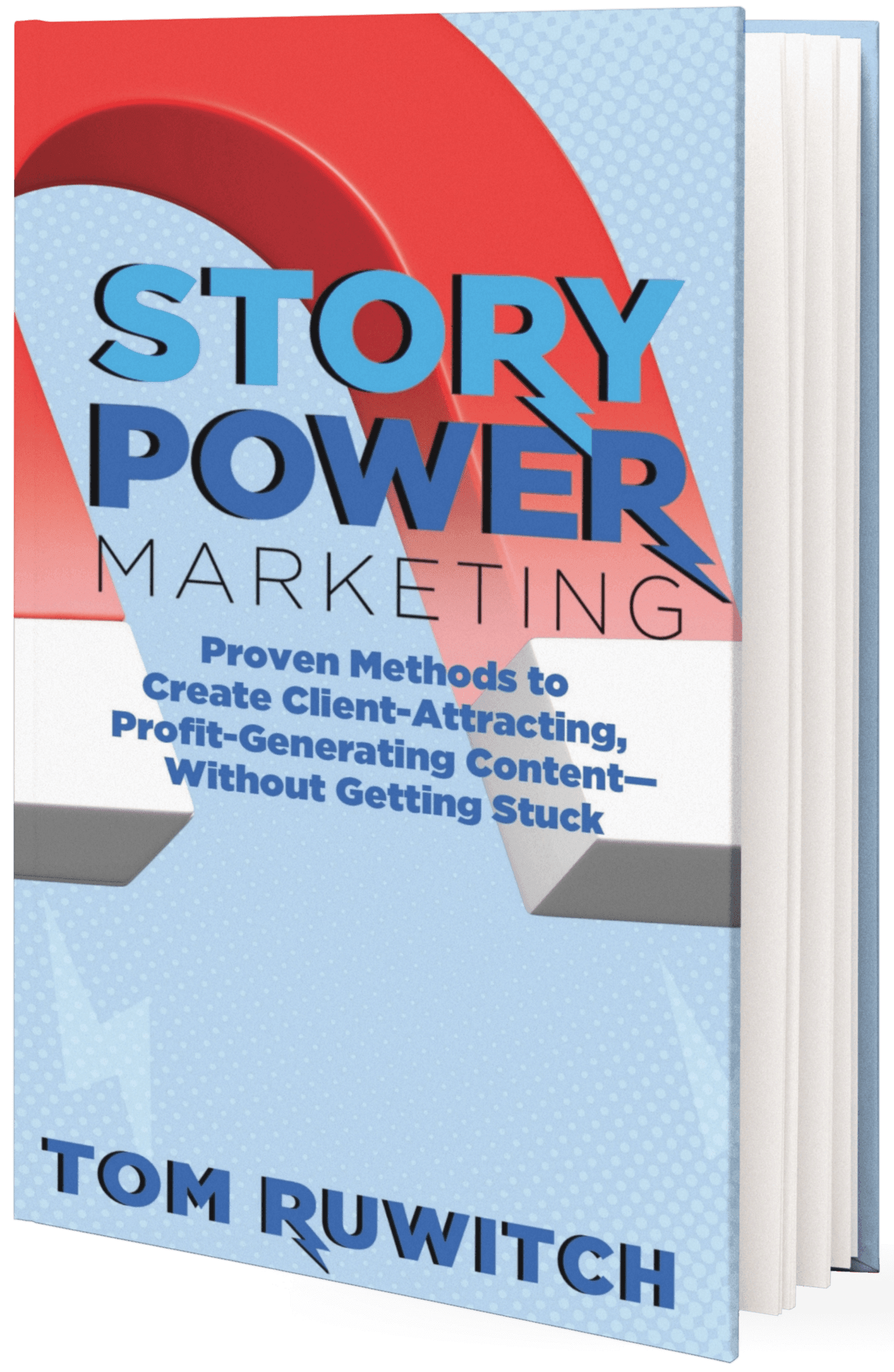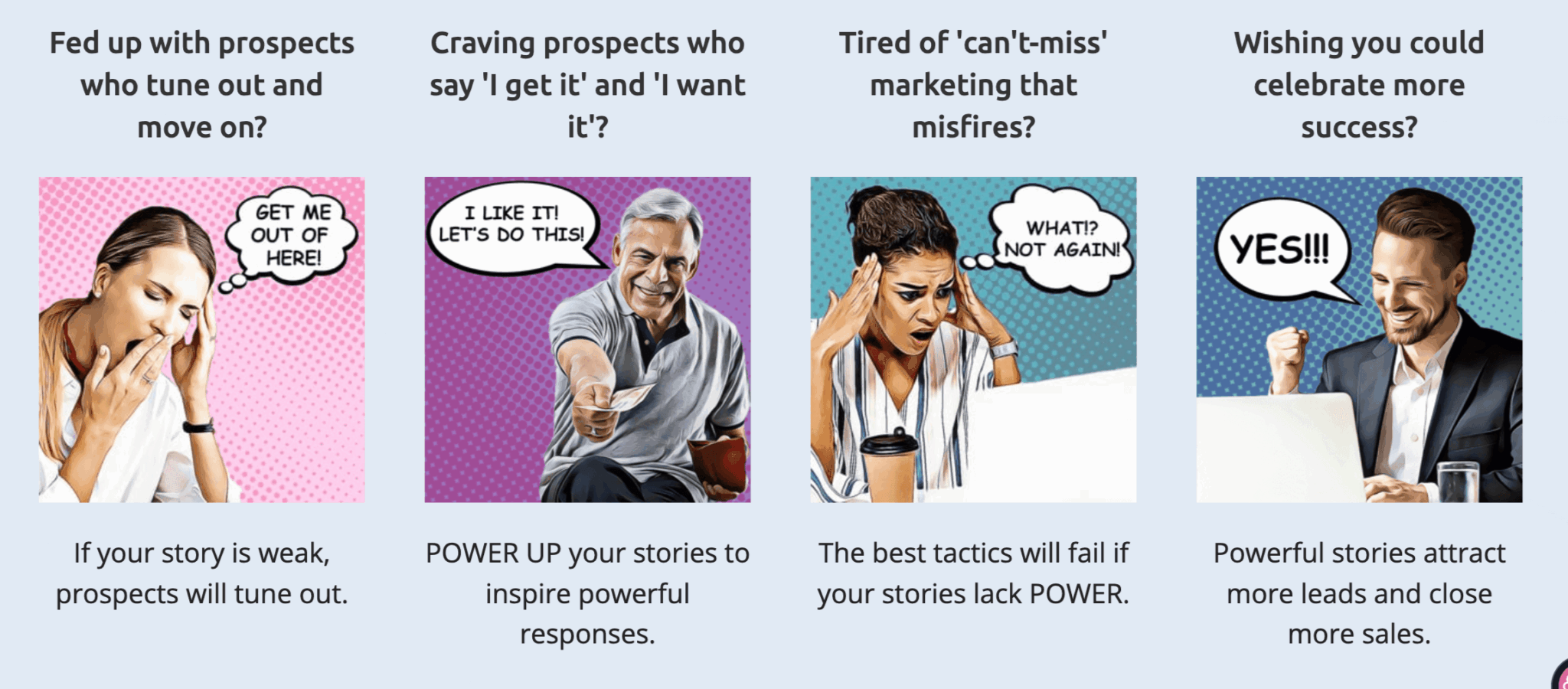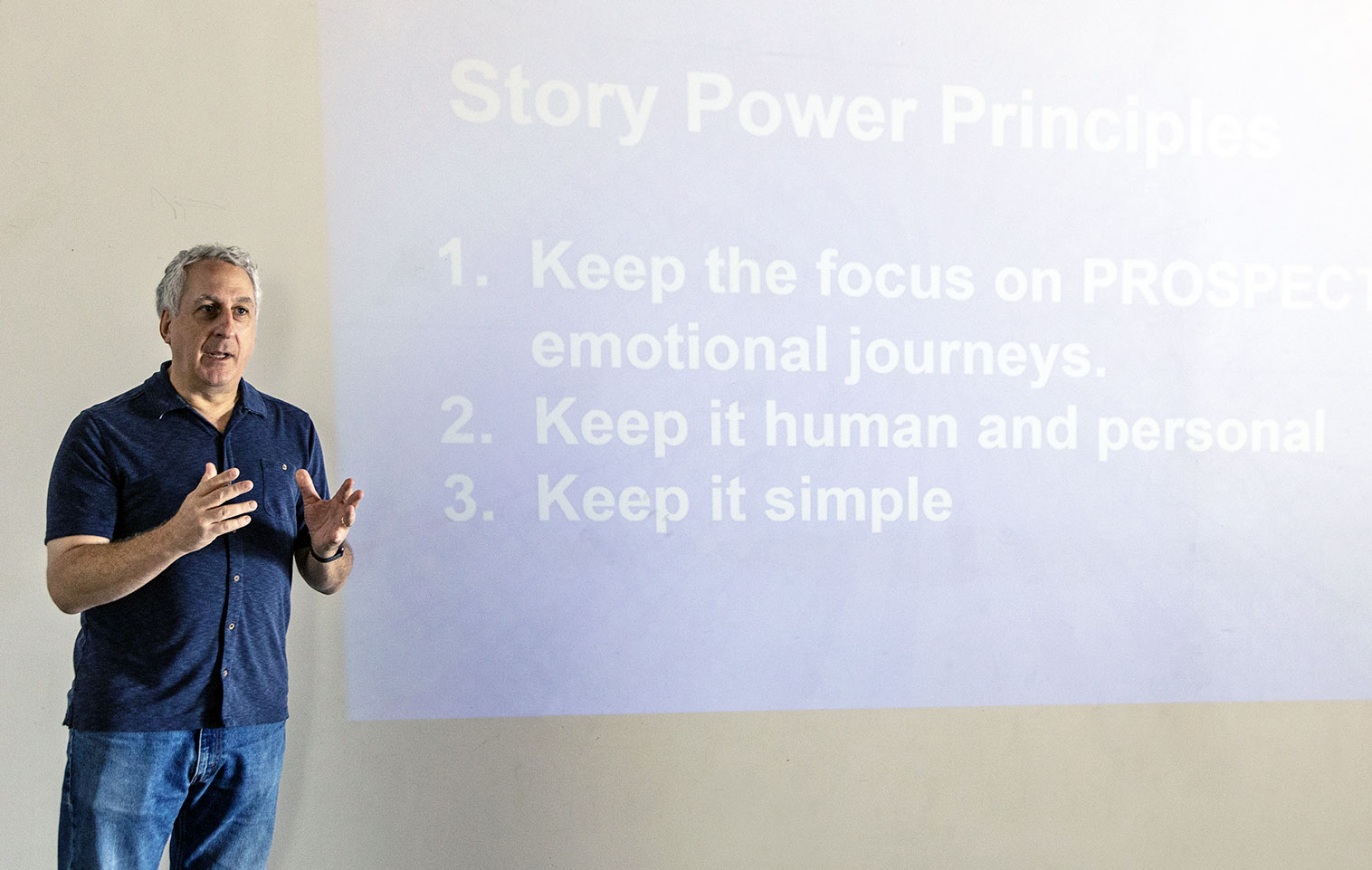We caught up with the brilliant and insightful Tom Ruwitch a few weeks ago and have shared our conversation below.
Tom , thanks for joining us, excited to have you contributing your stories and insights. We’d love to have you retell us the story behind how you came up with the idea for your business, I think our audience would really enjoy hearing the backstory.
For 19 years, I ran an email software company and marketing agency. When business leaders struggled with their marketing, I saw the same patterns repeat: They would chase the shiny tech squirrel (“I need fancier software to succeed in marketing.”) Or they would chase the shiny tactic (“Teach me a fancier funnel or marketing trick.”). Or they would chase the shiny tactician (“I need a different, bigger-name consultant or agency to help me.”)
But they rarely looked in the mirror and thought, “Maybe the quality of my content is the culprit. Maybe I’m creating content that leads prospects to tune out and move on, rather than tune in, turn on, and buy.”
That’s especially true with coaches, consultants, and other thought leaders who get paid to share what they know. Because they get paid for their knowledge, they have the tendency to dish out some important information (via emails, social posts, videos, etc.) and expect prospects to fall at their feet — wowed by the expert’s knowledge.
But information, alone, is not enough. As a marketing consultant, I began to focus on helping my clients transform their content from boring, information-only content to brilliant, informative AND entertaining content. Information-only content bores and drives away prospects. Info-taining, story-powered content draws them in and inspires them to buy.
When I sold the software side of my business in 2019, I launched Story Power Marketing where I help thought leaders transform their content so they can attract more and better leads, engage prospects more consistently and effectively, and land more clients.

Tom , love having you share your insights with us. Before we ask you more questions, maybe you can take a moment to introduce yourself to our readers who might have missed our earlier conversations?
I am a business advisor, storytelling standout, and content marketing pioneer. I help business leaders create, deliver, and track client-attracting content and cure tech headaches.
I spent the 1990s in the newspaper industry working as an award-winning reporter and editor and helping the St. Louis Post-Dispatch launch its first online products.
In 2001, I founded the email marketing software and services company MarketVolt. This was before most business people had even heard of email marketing, much less tried it. MarketVolt licensed its groundbreaking software to businesses around the globe, and it operated as a full-service agency – helping businesses of all sizes attract prospects and land clients with online and offline marketing strategies and tactics.
In 2019, I founded Story Power Marketing. Authors, coaches, and other experts hire Tom to transform their content from boring to brilliant – without writer’s block – so prospects tune in, turn on and buy.
In 2021, I launched Implementum — an all-in-one marketing, operations, and analytics platform that includes customized, done-for-you campaigns, strategy, and hands-on-training. Implementum helps business leaders build automated marketing machines so they can grow and profit without tech headaches.

Learning and unlearning are both critical parts of growth – can you share a story of a time when you had to unlearn a lesson?
I used believe the old adage “The customer is always right.” That’s not true. And I learned that the hard way by allowing a customer to mistreat (verbally steamroll) one of my employees, only to have me side with the customer who is always “right.” That customer was wrong. And I was wrong not to defend my employee and his (correct) point of view.
Since then, I’ve operated with a different philosophy: You must always treat customers with respect — unless they mistreat you or your employees. If that happens be clear with them about expectations and boundaries. In most cases, customers respect and appreciate honesty and clarity. In some cases, they don’t. Those are the customers who cross boundaries again. In those cases, do not be afraid to fire a client.

Where do you think you get most of your clients from?
#1 is referrals. If you deliver great products and services and offer extraordinary client support, clients will refer you to others. But referrals don’t just happen. You have to be deliberate and strategic about asking for them and building alliances with potential referral partners.
Contact Info:
- Website: https://storypowermarketing.com
- Facebook: https://facebook.com
- Linkedin: https://linkedin.com/in/tomruwitch

Image Credits
Photo of Tom Speaking: Caren Libby


